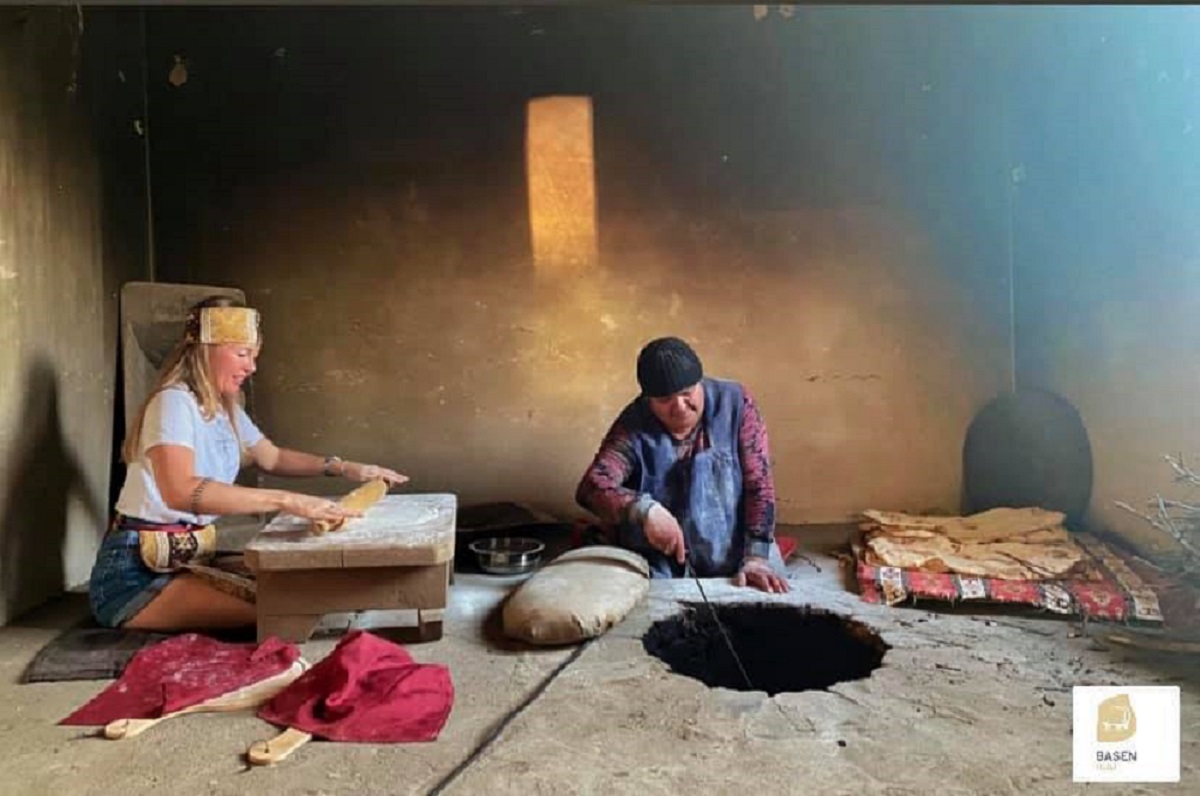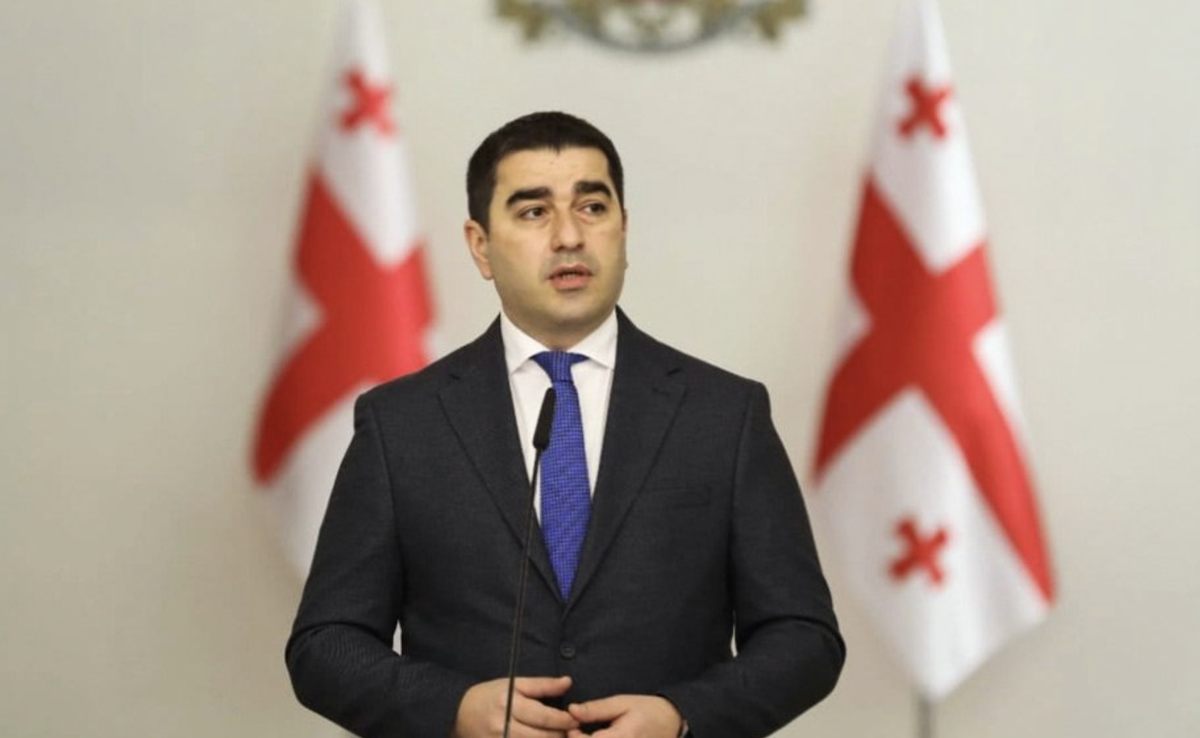Problems of southern Armenia, Syunik region, revealed in personal stories: Part 1
Karabakh Armenians in Syunik
The Karabakh war of 2020 and the September 2023 hostilities have changed life in the southern Syunik region of Armenia. This is especially true for the economic development of the region, the ability of local residents to earn and support their families.
The situation in Syunik has been particularly aggravated since May 2021, when the armed forces of Azerbaijan invaded the sovereign territory of the Republic of Armenia. The region lost dozens of hectares of land that were used for agriculture. Another part is under the direct aim of the Azerbaijani military. The main occupation of the population here is farming and cattle breeding.
At the same time, many former residents of Nagorno-Karabakh have settled in this area – those who moved here after the war in 2020 and those who were forced to leave their homeland in September 2023. Now they are trying to overcome the problems they have faced.
JAMnews presents a series of articles about Syunik residents and their problems. This article is about Edik Hakobyan, who moved here from NK in 2020.

- Tourist business on the border of Armenia: stories of those who have started a business there
- Why does Russia need a consulate in the south of Armenia on the border with Azerbaijan? Opinions
- How have Armenian villages ended up in Azerbaijan?
“No time to be discouraged.”
A one-hectare plot located a few kilometers from the village of Karashen in Syunik has become the main source of income for the family of 73-year-old Edik Hakobyan.
“Every day I come from Goris to Karashen, mostly by hitchhiking, then I walk about a kilometer through the gorge to get to the garden. This land was not cultivated, it was pasture. I had to work hard to create a garden. But this land gives me strength to live, to create, to strive for more. We have no time to be discouraged,” he says, while loosening the soil.
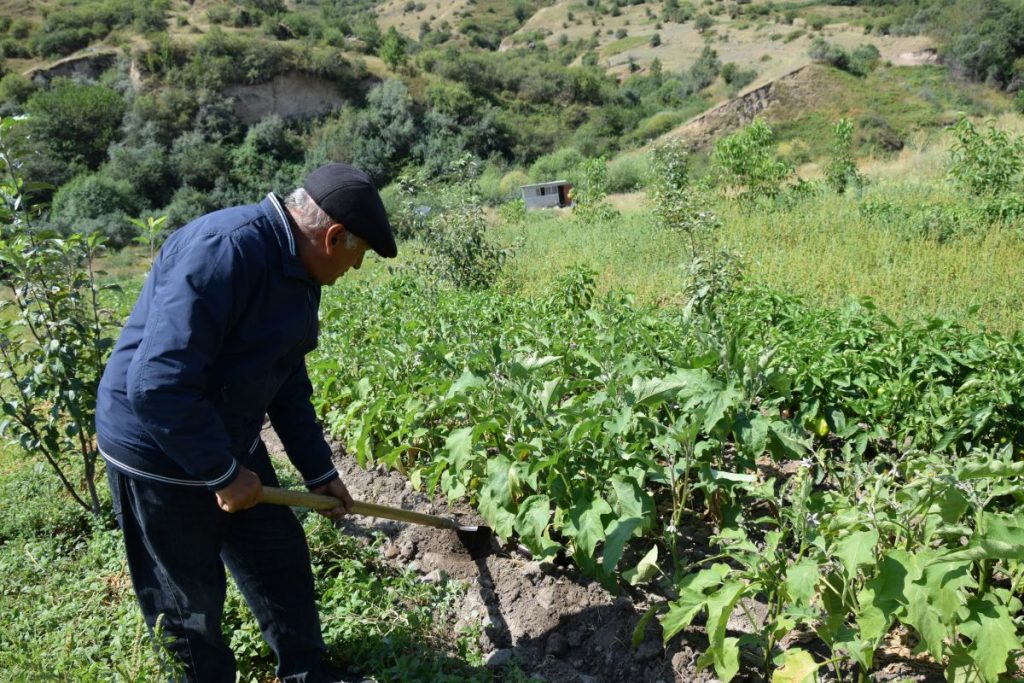
Edik lived in the village of Vurgavan in Nagorno-Karabakh. During the war of 2020, he and his family were forced to move to Armenia, to the village of Karashen, and then moved to the city of Goris.
A year after moving to Armenia, he bought land, fenced it, brought water and even brought a small house to his garden from Goris, which he uses as a utility room.
“Here is my house. I have created all the conditions here not only for myself but also for my guests. Now I will make coffee for you.”
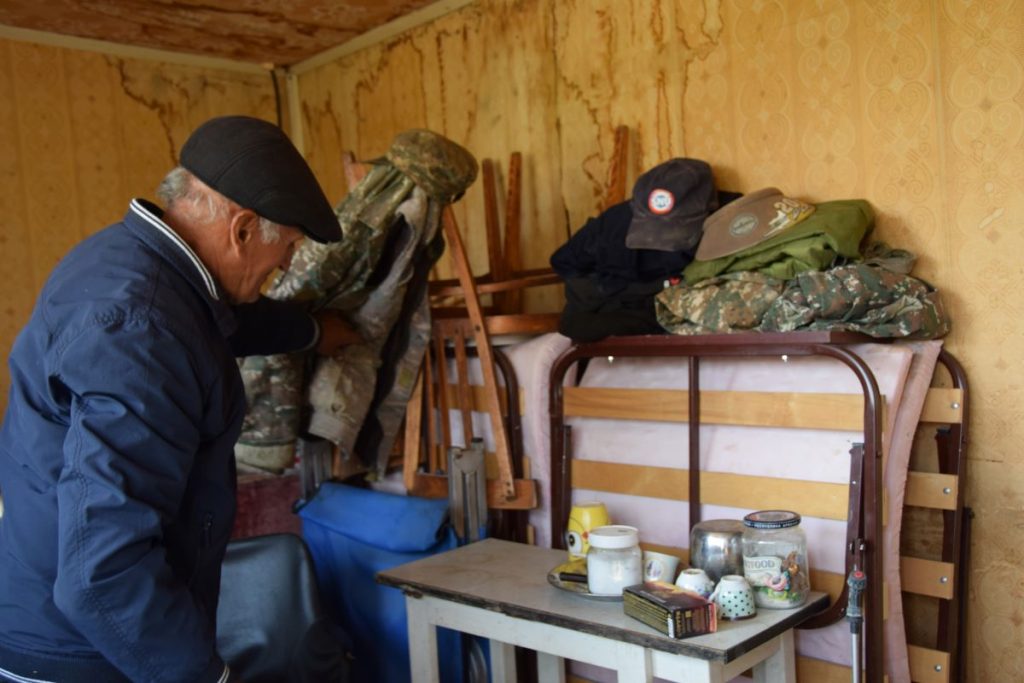
He has already planted more than 300 apple trees, 50 seedlings of persimmons brought from Nagorno-Karabakh, dwarf walnut trees, pears, cherries and cherries. He would like to grow figs and pomegranates like in Vurgavan, but the climate isn’t suitable.
“The climate here is cold. We can’t expect such a harvest as in Artsakh, but we try,” he says.
Edik constantly compares his two gardens. He recalls that he left about 40 tons of grapes and 15 tons of korolk in the Karabakh garden and left.
“It was a hard time. I was home alone. My grandchildren had already moved to Goris, my daughter-in-law was in the hospital in Yerevan, and my son was helping at the headquarters. On October 17, he called and said that the situation was bad, ‘I’m coming to get you, Dad, come out on the road.’ At that moment there was no way out, there was no way to take anything with me.
I immediately ran, took a blanket from the bed, spread it out, there was no time to look for my bag. I took documents, important photos, memorabilia. In short, I gathered it all up, threw it over my shoulder and went out on the road. I even forgot to untie the dog when I left the house. However, I scattered some wheat for the chickens, poured water for them, thinking that we would be back very soon.”
Syunik – a refuge for displaced people from NK
According to official data, about 96,000 residents of Nagorno-Karabakh were forced to move to Armenia because of the 2020 war. After some time, the majority returned to their homes. Those who lived in the settlements that came under Azerbaijani control could not return. But everyone moved out believing it was temporary.
“Everything we had, everything we had created over the years, we left and left, hoping to return to our home,” Edik says.
5,400 families, or 21,000 people, have settled in different regions of Armenia since 2020. Syunik was home to 819 Karabakh families until recently.
This region was the first to receive both those who left NK during the 2020 war and in September 2023.
After the military actions on September 19, more than 100 thousand Armenians left their homeland within a week. And the first to receive them was the town of Goris in Syunik, where humanitarian reception centers operated.
At present, according to the regional governor Robert Ghukasyan, only 5,257 people are left. People do not want to live in the border region. They fear repeated resettlement due to the unstable situation on the border with Azerbaijan.
Benefits for residents of border settlements
After the territory of NK came under the control of Azerbaijan, 37 settlements of Syunik region received the status of border settlements by decision of the Armenian government.
In May 2021 the Azerbaijani Armed Forces invaded the sovereign territory of Armenia. Azerbaijani military positions appeared next to the houses of residents of some villages, literally a few meters away.
The Armenian government provided the residents of these villages with the following privileges and benefits:
- partial compensation of utility costs – electricity and gas,
- zero payment for water used for irrigation, as well as property and land taxes,
- reimbursement of school textbooks.
Residents of the border region were not particularly pleased.
“If there is no land, what land tax? If I had my land, I would cultivate it, maintain my house and pay taxes,” they say.
NK residents living in these settlements, in addition to the benefits listed above, were also provided with financial assistance.
“Thanks to the lump sums provided by the state – 300 thousand drams [about $750], 68 thousand [about $170], 40 thousand [about $100] from the private sector we were able to put our garden in order. We spent about two million drams [about $5,000] to fence the garden, buy saplings, and level the road. It was a big expense, but now we have something that will bring us income. In five or six years, the garden will produce a full crop. And even now we have plums, we had a harvest of cherries,” Edik says.
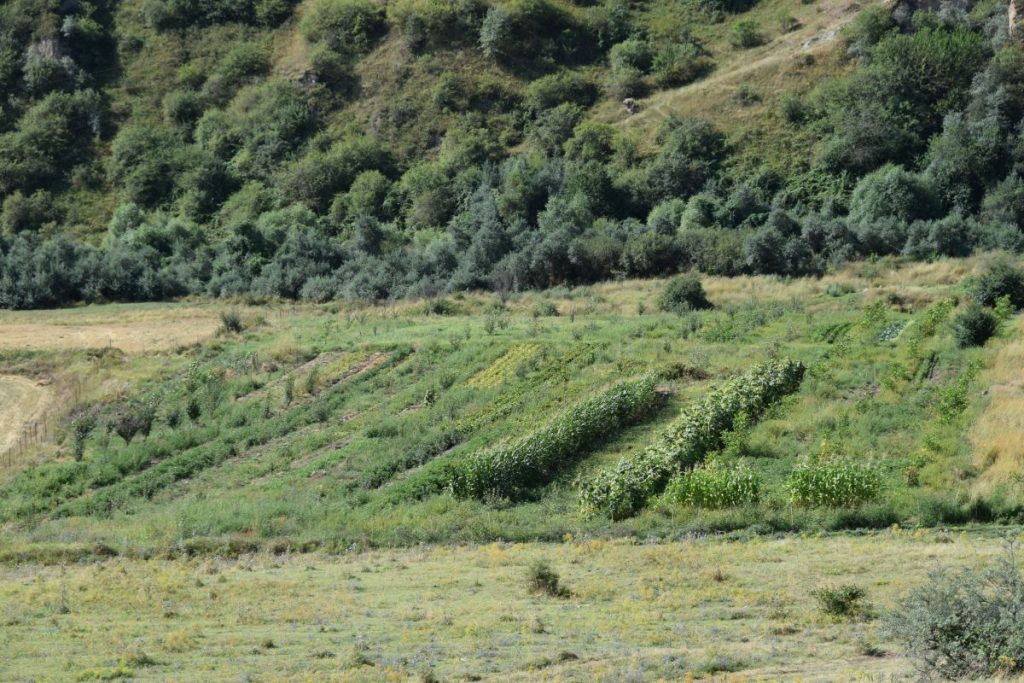
“You just have to work”
Edik is a former math teacher. For 15 years he was the headmaster of a school in Vurgavan.
But he also has a lot of experience in agriculture. Edik thinks that the area where his new garden is located is not very suitable for growing fruit and heat-loving plants. He says it’s better to grow vegetables and grains.
“If you have heat and water, you can grow anything. There’s not much heat in these parts. And the water is a bit hard. But we still managed to grow good fruit.”
Edik believes that instead of complaining about fate, one should work:
“You need to work hard, to become stronger, to strengthen your country, to stand firmly on your land in this unfair world.”
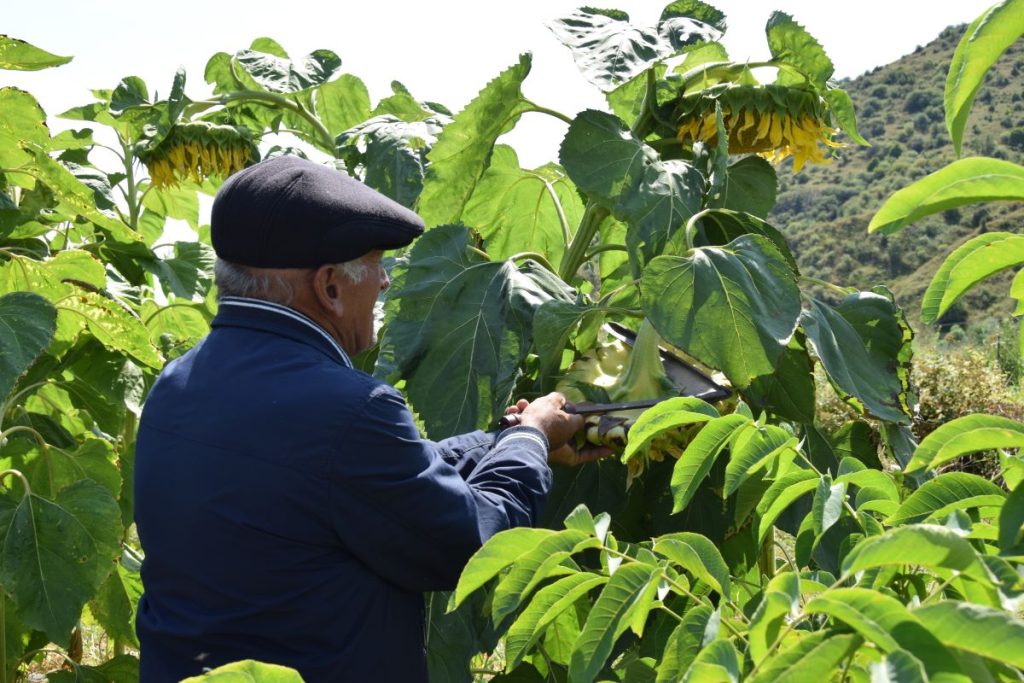
This publication was produced with the financial support of the European Union. Its contents are the sole responsibility of EU4IM’s beneficiary MediaGET/JAMnews and do not necessarily reflect the views of the European Union
Follow us – Twitter | Facebook | Instagram
Karabakh Armenians in Syunik










